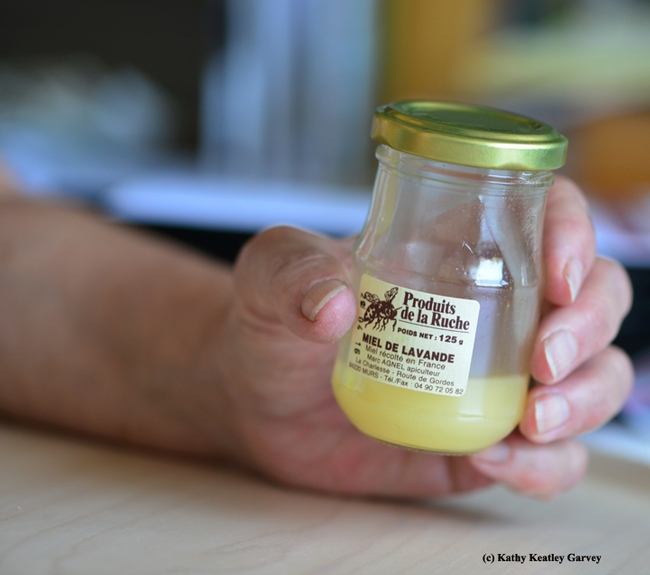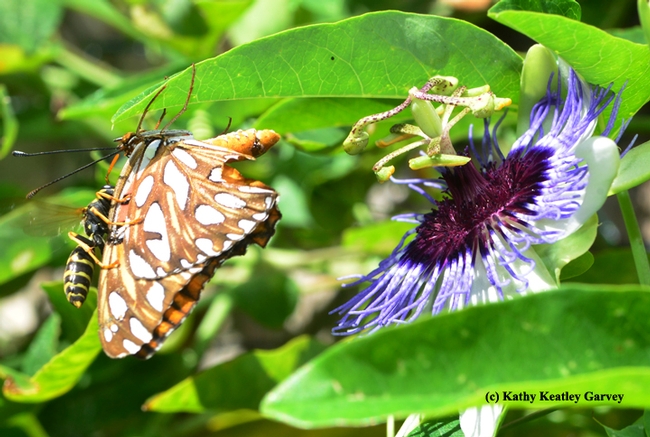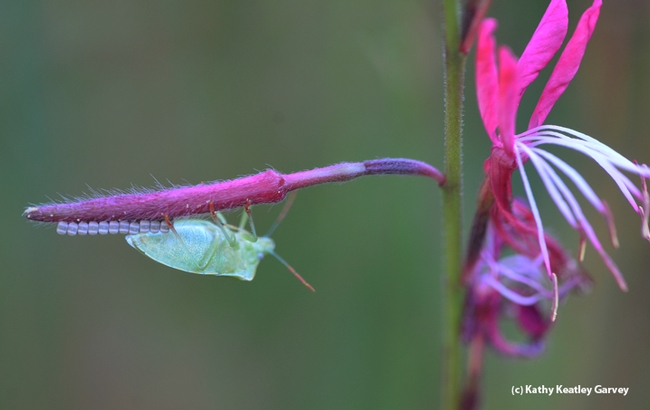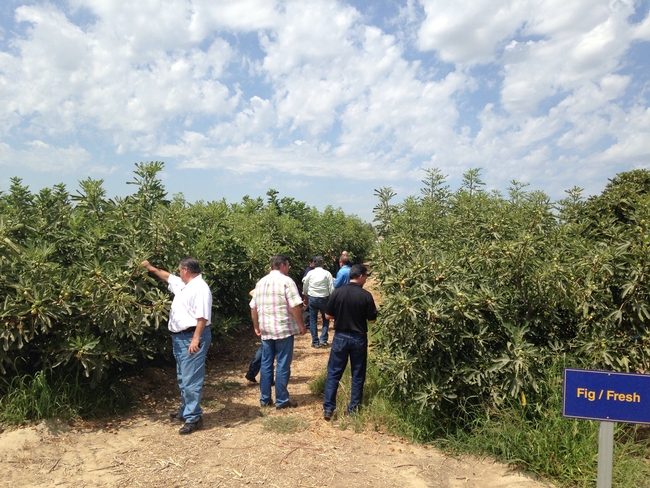Backyard Orchard News
UC research on pedestrian orchards at Kearney featured on the local news.
For the past 17 years, Kevin Day, a UC Cooperative Extension farm advisor for Tulare County, and Ted DeJong, UCCE specialist in the Department of Plant Sciences at UC Davis, have been comparing the quality of fruit on conventional peach and nectarine trees and smaller trees grown on size controlling rootstock, reported KSEE Channel 24 news and KMJ Farm Report in Fresno. The impact of plant spacing and limb training were also assessed.
The goal is to have trees below 8 to 9 feet with traditional scion cultivars on size controlling rootstock. With reduced yield per tree due to the size, the distance between rows and trees in the row can be reduced to get the same or higher yield per acre. Controller 9 is currently being planted commercially. Farmers can get some yield the second year after planting.
Shorter trees can eliminate ladder work, reducing labor costs and increasing worker safety. For more information, please see the ANR News blog.
See the video on the KSEE Channel 24 website.
Listen to a podcast of the KMJ Farm Report with the story on the peaches and nectarines on 8/12/2014 located at 44:30 minutes into the podcast.

Stonefruit rootstocks evaluated by UC Scientists help control tree size.
A Taste of Honey
Honey connoisseur Amina Harris, director of the UC Davis Honey and Pollination Center, opens...

Jar of lavender honey rests next to the UC Davis Honey and Pollination Center's Honey Flavor Wheel. (Photo by Kathy Keatley Garvey)

The jar of lavender honey, "miel de lavande," is from France. (Photo by Kathy Keatley Garvey)

Amina Harris sniffs the aroma. (Photo by Kathy Keatley Garvey)
Wasp Attack
When you're trying to rear Gulf Fritillary butterflies (Agraulis vanillae), expect the expected:...

European paper wasp targets a crippled Gulf Fritillary. (Photo by Kathy Keatley Garvey)

A European paper wasp attacks a crippled Gulf Fritillary. (Photo by Kathy Keatley Garvey)

The injured abdomen of the Gulf Fritillary. (Photo by Kathy Keatle Garvey)

European paper wasp grips the Gulf Fritillary. (Photo by Kathy Keatley Garvey)
Stink Bugs Do It, Too!
"Birds do it," sang Ella Fitzgerald. "Bees do it..." "Even educated" (insert "stink bugs") "do...

Red-shouldered stink bugs mating. (Photo by Kathy Keatley Garvey)

Stink bug laying eggs on a guara stem. (Photo by Kathy Keatley Garvey)

Close-up of stink bug eggs on a guara stem. (Photo by Kathy Keatley Garvey)
Grocery workers see the fruit of their labor from a different angle
A group of 22 produce executives and supervisors from the SaveMart Corporation - which includes Lucky and FoodMaxx grocery stores - spent a morning at the UC Kearney Agricultural Research and Extension Center today to experience another part of the food journey.
The visitors were the guests of Carlos Crisosto, UC Cooperative Extension postharvest physiologist in the Department of Plant Sciences at UC Davis. They toured the F. Gordon Mitchell Postharvest Laboratory, which includes 18 controlled temperature and relative humidity rooms, eight of which are capable of controlled atmospheres. Years of work in the state-of-the-art facility by Crisosto and his colleagues resulted in a completely new protocol for handling peaches, plums and nectarines as they journey from the farm, to packing sheds, in the backs of trucks to distribution centers and finally to the supermarket produce aisle.
The findings came as a surprise to the industry when they were introduced nearly 10 years ago, but they have been widely adopted. In a nutshell, fruit is now "preconditioned" before it is cooled, a process that results in better tasting fruit, and subsequently, better sales of this Central California summertime staple.
The SaveMart tour continued in the field, where the group saw research plots of kiwifruit, pistachios, stone fruit, grapes, blueberries and other crops. A highlight was the fresh fig orchard, where all the participants hopped off the tram to pick and eat the tree-ripened fruit.


